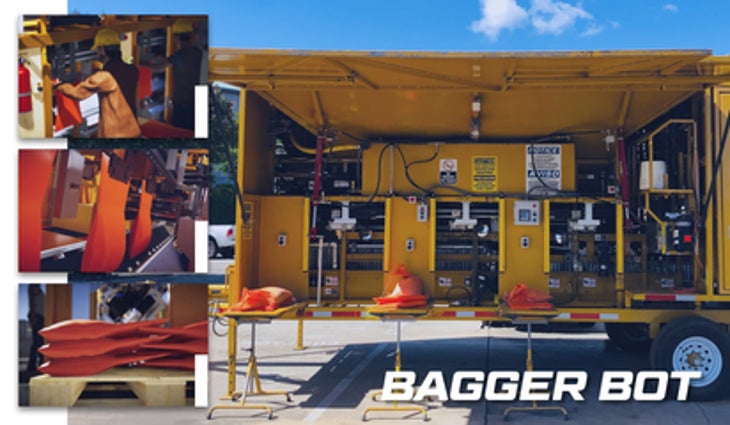The old adage that says “You have to spend money to make money” is especially true when it comes to startup funding. That’s because startups can’t get off the ground without seed money. Usually, seed money comes from venture capitalists or angel investors who provide funding in exchange for equity in the startup.
However, most startups burn through their seed money very quickly. That’s because finding office space, getting computers and hiring the startup’s first employees costs a lot of money. Once that money is spent, the startup will have to seek additional capital. Oftentimes, this process is accomplished through series A, B and C funding.
How Does Startup Funding Work?
When publicly traded companies need to raise money, they have two options: sell stock or borrow money. Startups, on the other hand, don’t have these options available to them for several important reasons.
Startups are brand new companies that don’t have the assets to secure financing or a valuation that they can use to sell shares. So many startups turn to venture capitalists and angel investors. Other startups also use equity crowdfunding to raise capital, while others use a combination of both.
Platforms like Wefunder and StartEngine have revolutionized the way startups raise capital. Early investors put money in and gain a share of equity in the startup. If the startup becomes successful, those early investments will look like peanuts in relation to how much equity the startup investor holds if the startup eventually goes public.
Once the startup secures enough seed money to open its doors, it begins gaining a following or customer base. A social media company, for example, will use seed money to launch the platform and begin attracting new users to it. Or a food delivery company may hire its first drivers and sign contracts with food providers before advertising for new clients.
At this point, the startup is not necessarily focused on making money but on making a splash in whatever industry the startup is a part of. Once the startup hits a saturation point where it has enough customers or visibility, it will very likely need additional cash infusions to make the transition from startup to money-making company.
That’s when startups typically move on to Series A, B and hopefully C funding.
What is Series A Startup Funding?
Series A startup funding is the point where a startup goes from a neat idea to a company that’s attracting attention from serious investors. That designation usually requires the startup to have reached or exceeded whatever performance metrics indicate success in the startup’s industry. An example would be a startup social media platform reaching a point where it has a million users, or a food delivery site doing several hundred deliveries per day in its chosen market.
Whatever the metric is, when the startup reaches a point where it is seeking Series A funding, it has enough customers or users for the company to be valued. The most common sources of Series A funding are established venture capital (VC) firms or funds. In many cases, the VC entity that makes the largest investment at the Series A level becomes known as a lead investor. Lead investors help startups in several important ways.
First, the lead investor can provide valuable experience and counsel when it comes to helping the startup expand into new markets and grow strategically. The startup’s ability to scale its growth and begin turning a profit will be key to securing Series B and Series C funding. Solid lead investors can assist in this process.
When top-rated VC firms make large investments into startups, the startup gains additional visibility and goes up in value. The key thing investors are looking for at the Series A stage is upside. If a well-respected VC fund sees enough upside in a startup to make a Series A level investment, it bodes well for the startup’s future.
However, the unfortunate truth is that most startups never progress past the Series A stage. Most VC firms are looking for more growth potential than startups offer when they solicit Series A funding. In response to this, many startups seek Series A funding through equity crowdfunding offerings.
Series B Startup Funding
In the Series B funding stage, startups are looking for a round of funding to finance the next stage of their growth. A startup at the Series B funding stage has proven that it can attract a large-enough customer base or following to make investors believe the startup has a good chance of long-term success. This stage of funding will be used to build the startup all the way out to the point where it can serve clients in multiple markets.
So, in the case of a social media startup that reaches 1 million users, Series B funding will be used to expand the company’s operations beyond its original market. This process might mean hiring more customer service reps and sales professionals and expanding the in-house IT operation at the startup’s original headquarters.
Companies in the Series B stage typically have solid valuations that are reflective of their early performance, usually in the low-to-mid eight-figure range ($25,000,000 to $60,000,000). The most solid startups at the Series B stage are on the higher end of that valuation scale. This round of funding usually raises between $25,000,000 and $35,000,000.
Conceptually, Series B funding is similar to Series A funding in that the money is still used to build out the startup’s infrastructure and operational capability. However, the Series B fundraising drive is specifically aimed at investors and firms that have a solid track record of making successful Series B or Series C investments.
Series C Startup Funding
A company that reaches the Series C funding stage has arrived, so to speak. It is strong, profitable and has a large market share in whatever business it is involved in. The social media company, for example, is now making money and known as a real player with a loyal customer base that uses the platform on a daily basis.
At this point, the startup is almost no longer a startup but rather a successful company. It is no longer raising money to sustain itself but instead raising money with an eye on expansion. The plan could mean moving into foreign markets or purchasing a competing social media platform to increase the company’s market share.
Companies at the Series C funding stage also attract a different profile of investors. Established commercial banks, hedge funds and private equity operations take notice. The Series C stage of fundraising is often used to add value to a company planning an IPO.
For a startup to get to the Series C funding level, it must have proven it is more than just a neat idea. In addition to solid customer bases, it has proven it has balance sheets to match. In other words, this company has gone from crawling to walking and is now ready to make a successful run on Wall Street.
Benzinga’s Best Startup Offerings
Startup investing is an extremely attractive prospect for investors looking to build wealth in a short period of time. In fact, just one investment in the right startup can change your life forever. Until now, most startup investing was limited to venture capitalists, accredited investors or people in the immediate circle of whoever founded the startup.
However, the advent of online equity crowdfunding platforms and loosening of federal investor accreditation restrictions has opened up the world of startup investing to more people than ever before. If you’d like to get involved in startup investing, take a look at this list of Benzinga’s best startup offerings. You’ll find a great variety of offerings at various stages of funding to choose from.

Minimum Investment: $100 – $999
Investment Term: N/A
Open to Non-Accredited Investors?: Yes

Minimum Investment: < $100
Investment Term: N/A
Open to Non-Accredited Investors?: Yes
Which Stage of Startup Investing is Right for You?
Several important stages of fundraising occur in the development of a successful startup. The earlier you get involved, the more profit you stand to reap if the startup becomes successful. However, the level of risk at the Series A stage of startup investing can be high. At that point, you’re basically betting on an idea.
The truth is, more startups will fail than succeed. But you can’t have the upside without the risk. From a risk management perspective, series B or C startup funding is a little bit less risky because those investments are typically made in companies that are up and running. Unfortunately, the fact that companies in the series B or C level are already showing promise can make those investments more costly.
Many online equity crowdfunding platforms have startups in various stages of fundraising. You will have to weigh your investing goals versus your risk tolerance in deciding which stage of startup funding best suits your needs as an investor. In the meantime, you can always come to Benzinga for information and guidance.
Frequently Asked Questions:
Is Series A funding public?
1
Is Series A funding public?
asked
Eric McConnell
1
Series A funding of startups is almost exclusively done with private funding because most startups at this stage have no performance history or valuation. Without this valuation, it’s basically impossible to sell shares in a company on a publicly traded exchange. In Series A funding, startups are typically trading future equity for funding to get what seems to be a viable business idea up and running.
Answer Link
answered
Benzinga
What is a good Series C funding amount?
1
What is a good Series C funding amount?
asked
Eric McConnell
1
A startup that reaches the Series C funding level has done a solid job of building market share, client base and a solid business outlook for the future. At this point, it has progressed through Series A and B rounds of fundraising and is now beginning to attract attention from institutional investors and hedge funds.
Usually, Series C fundraising is the final stage before a startup goes public, and the main goal of Series C fundraising is to grow the company’s value to make it a more attractive IPO option. No set number defines a good series C funding amount. The ultimate goal of Series C funding is to push the company over the top and into a place where the company can be publicly traded.
A good Series C funding amount is however much money the company needs to make it to the next level. For some companies, that could be $50,000,000, but it could be several hundred million for other companies.
Answer Link
answered
Benzinga
Arrived Homes allows retail investors to buy shares of individual rental properties for as little as $100. Arrived Homes acquires properties in some of the fastest-growing rental markets in the country, then sells shares to individual investors who simply collect passive income while waiting for the property to appreciate in value over 5 to 7 years. When the time is right, Arrived Homes sells the property so investors can cash in on the equity they’ve gained over time. Offerings are available to non-accredited investors. Sign up for an account on Arrived Homes to browse available properties and add real estate to your portfolio today.
Credit: Source link




















